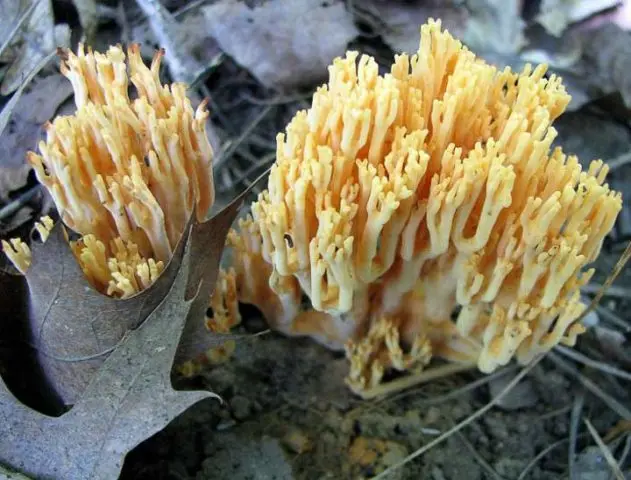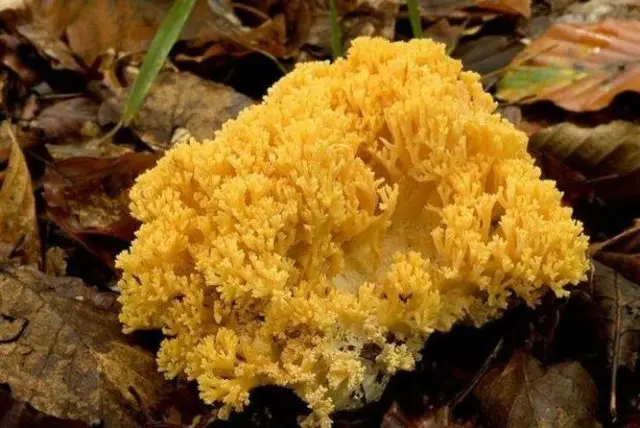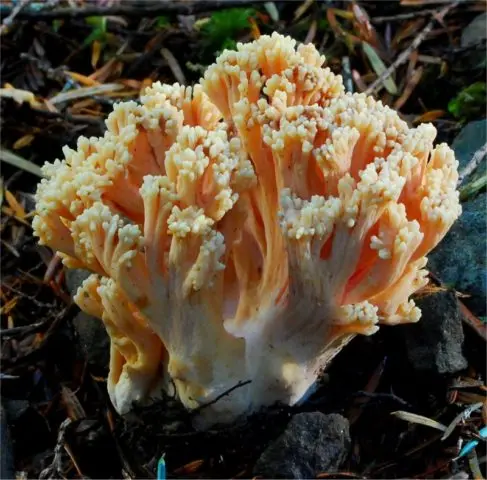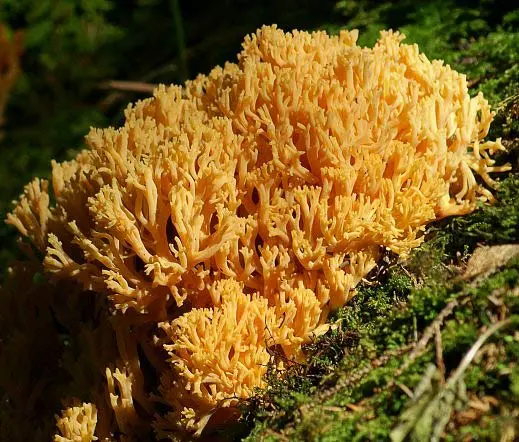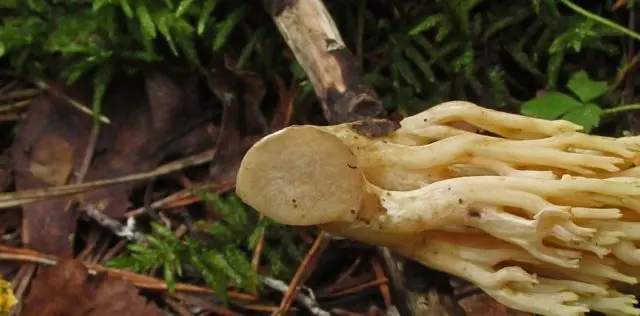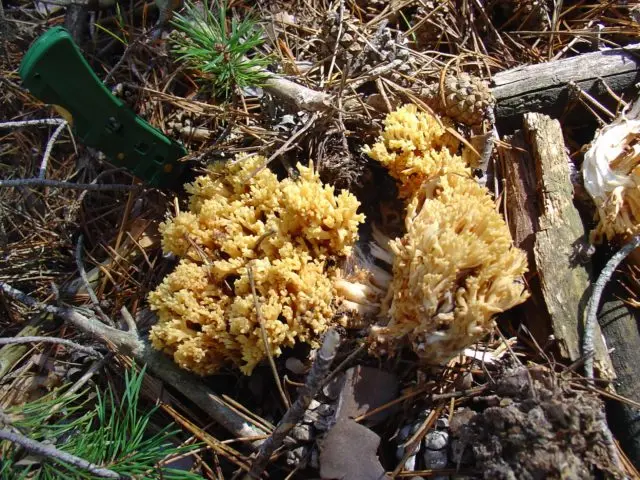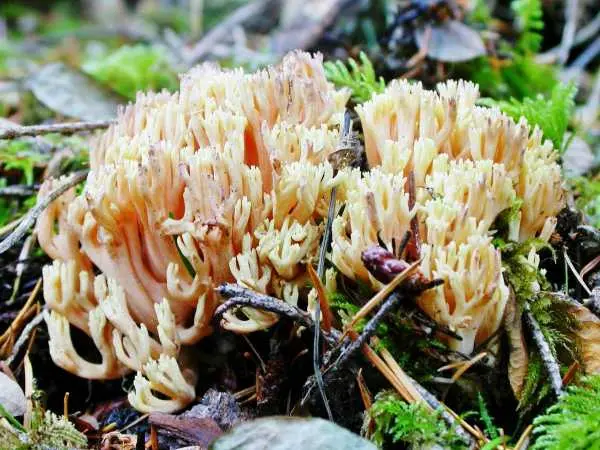Contents
Yellow Hornbill is a conditionally edible mushroom resembling coral. It can be found in forests in temperate climates. Young fruiting bodies of this mushroom variety have a pleasant taste and beneficial properties for humans. Mature representatives are bitter, they are not used for food.
Where do yellow horns grow
Yellow horns (lat. Ramaria flava) are representatives of the genus Ramaria, Gomfov family. Synonymously they are called: Ramaria yellow, Deer horns, Bear’s foot, Mushroom Noodles, Yellow coral.
In Our Country, yellow horned is found in the Caucasus, in the Crimea, Karelia. It is also common in Finland. It prefers moist, clayey, moss-covered soils. This mushroom grows abundantly in areas with a temperate climate, in the forests of the foothill and mountain belt:
- coniferous, fir and pine;
- deciduous, with a predominance of beech, oak, hornbeam;
- mixed fir-beech.
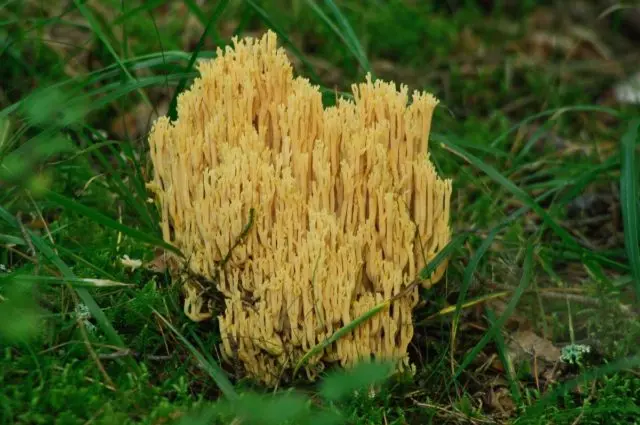
Deer horns bear fruit rarely and little, from July to October. Favorable temperature for their development is 12 – 20 0C. This species grows singly or in groups forming arcs or rows.
What do yellow horns look like
Outwardly, yellow horns are similar to sea corals. Their surface is dry and matte. Multiple dense cylindrical branches depart from the thick stem. They are almost the same length and end in two blunt tops with truncated edges. Moist flesh becomes reddish when pressed. In mature specimens, its texture is dense, and the twigs have a bitter taste.
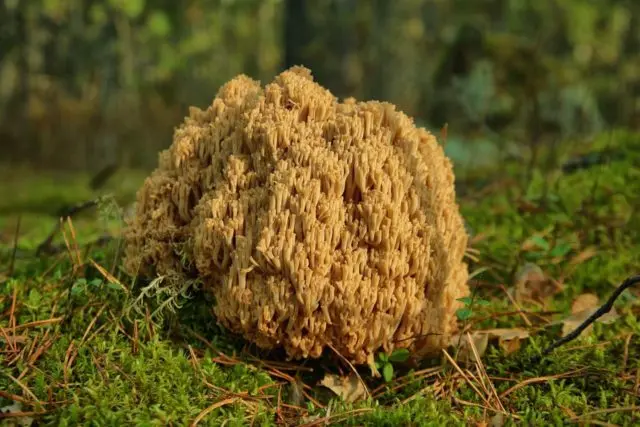
The leg of this type of ramaria is 8 cm high and 4-5 cm in diameter. It is colored in the range of the whole mushroom, but brightens towards the base. The flesh of the leg is dense, with a grayish tinge.
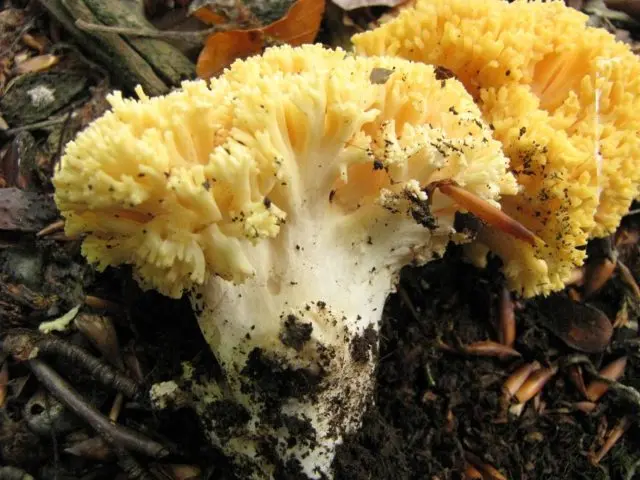
The color of fruiting bodies varies, depending on the degree of maturity and habitat. Mushrooms come in all shades of yellow: apricot, orange, ocher, cream. Under the branches near the stem, they are painted in a gray-yellow tone.
An ocher-yellow spore powder forms on the outer surfaces of the hornbill. Spores are oval and rough.
The sizes of deer horns are impressive: the height is 15-20 cm, the diameter is 10-15 cm. The weight of one specimen can reach 2-3 kg.
Is it possible to eat yellow horns
Deer horns are conditionally edible mushrooms. Young fruiting bodies are eaten. The pulp of adult specimens is very bitter, therefore it is of no gastronomic value: yellow ramaria belongs to the 4th category. In cooking, this mushroom is used only after preliminary boiling.
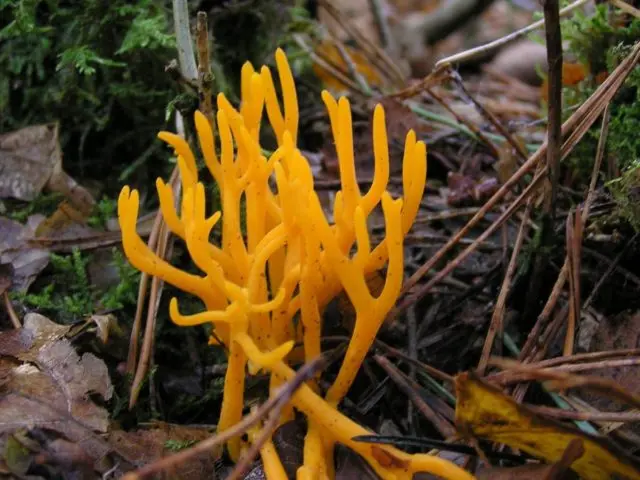
Taste qualities of yellow horned mushroom
The taste characteristics of deer horns are ambiguous. It all depends on the place of growth and the degree of maturity of the fruiting bodies:
- Young specimens have a pleasant light mushroom aroma, diluted with the smell of grass. Cooked pulp, depending on the method of processing, with its delicate taste may resemble chicken breast or shrimp.

- Mature fruiting bodies of the hornfish are unpleasant to chew due to their tough and at the same time loose texture. The taste of the pulp is bitter, pungent, with a sour tinge. Because of this, it cannot be eaten.

Benefits and harm to the body
Fruit bodies of yellow ramaria contain sterol, lipids, vegetable protein, amino acids. Due to this composition, they have a beneficial effect on the human body, which contributes to:
- elimination of toxins and neutralization of free radicals, which serves as a prevention of skin aging;
- increase immunity;
- strengthening the walls of blood vessels and preventing thrombosis;
- normalization of the psycho-emotional state;
- reduce the likelihood of cancer;
- improving the functioning of the respiratory system.
The negative effect of these fungi can manifest itself in disruption of the gastrointestinal tract and the appearance of allergic reactions. Ramaria yellow is dangerous for pregnant and lactating women, the elderly, and those suffering from diseases of the digestive system.
False twins of ramaria yellow
Some mushrooms have an external resemblance to yellow ramaria. Among the twins, there are both edible and inedible varieties:
- Beautiful Horned (Ramaria formosa) is an inedible mushroom. The height of its fruiting body is not more than 20 cm. The color of the surface contains pink, white and lemon shades.

- Ramaria golden (Ramaria aurea) is classified as a conditionally edible variety. The differences between it and the yellow horn are only visible under a microscope.

- Ramaria obtusissima (Ramaria obtusissima) is an inedible species with a very bitter taste that grows in mixed forests in the Far East and Siberia, where oaks and firs are present. The branches of its fruiting body have rounded endings.

- The sticky calocera (Calocera viscósa) is the poisonous twin of the yellow ramaria. It can be distinguished by its dense jelly-like pulp and bright egg-yellow color. It grows on fallen tree trunks and stumps.

Collection rules
When collecting yellow horns, it is recommended to adhere to the following rules:
- Do not collect mushrooms that grow on stumps or deadwood. It may be the poisonous counterpart of deer horns – sticky calocera.
- Only young specimens are cut, because mature ones are unsuitable for consumption.Advice! Adult yellow horns have brighter pigmentation than young ones.
- The earth around the mushrooms cannot be turned up – this destroys the mycelium.
- Fruiting bodies are conveniently folded into wicker baskets. In a bag or in a bucket, they can be wrinkled.

How to cook ramaria yellow
In cooking, yellow ramaria is used to prepare mushroom soups, sauces, snacks, and also as an independent dish. Fruiting bodies are usually not canned or pickled. It is allowed to store these mushrooms for a long time only in salted form.
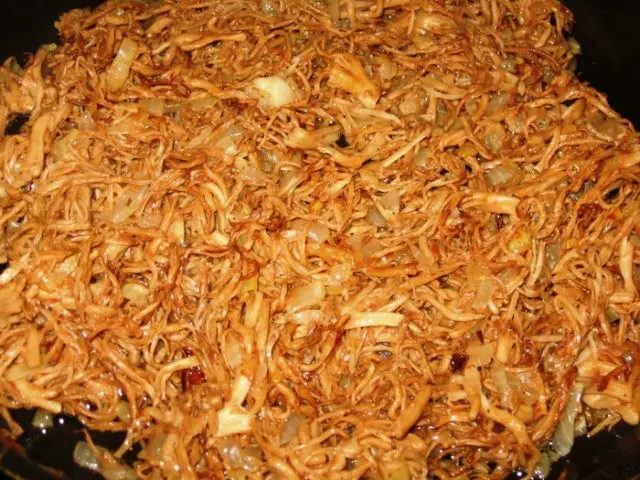
To properly prepare yellow ramaria for use, you must:
- Rinse the fruiting body thoroughly under running water: due to the nature of the structure, dirt can clog between the branches.
- Boil mushrooms in boiling water for 30 minutes. The decoction is prohibited.
- The pre-heated Hornet must be rinsed again under running water.
- Then boil the ramaria again for 10 minutes.
- Rinse the mushroom again under running water.
“Sharp Corals” is one of the recipes for a savory yellow hornbread appetizer. To prepare this dish, you will need:
- boiled and washed horns – 500 g;
- red onion – 1 head;
- green onion – 1 bunch;
- garlic – 2 – 3 cloves;
- soy sauce to taste;
- vegetable oil for frying.
This appetizer is prepared in this sequence. Prepared mushrooms are divided into fibers. Red onion is cut into half rings, garlic – into small cubes. Green onions are cut at an angle into slices 5-6 mm wide. Red onions and mushrooms are fried for 5 minutes. in a small amount of oil in a well-heated pan. Then soy sauce is poured into it, covered with a lid and stewed for 7-10 minutes. Remove the dish from the heat, add garlic and green onions, let it brew for 5 minutes. Hornets prepared according to this recipe are served cold or hot.
Another recipe for making pasta with horns and sausages is presented in the video:
Conclusion
The yellow horn is almost never found in the Central strip of Our Country. Its branched fruit bodies can be found in mountain and foothill forests. Young representatives of the species are eaten. Useful properties of the product allow it to be used in traditional medicine and cosmetology. This variety should be collected with caution: it has poisonous counterparts.










